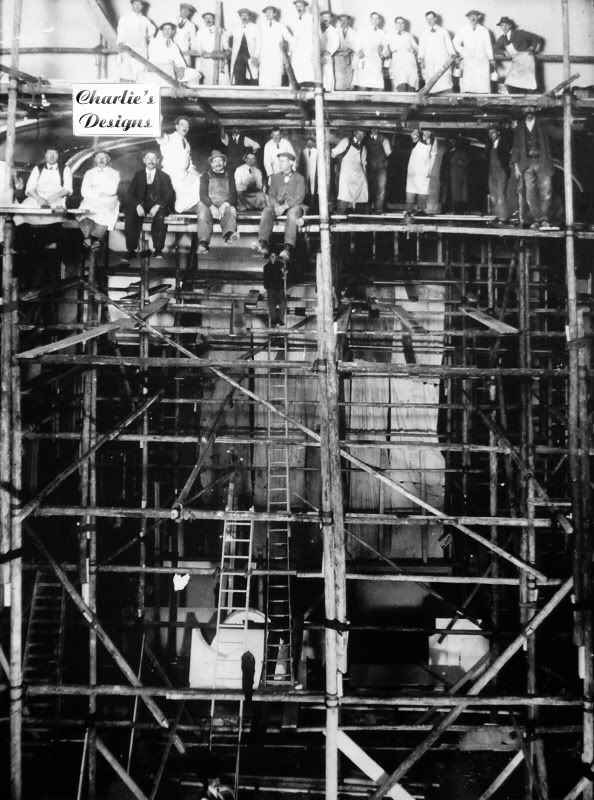Those were the days, my friend......we thought they'd never end,
Oh yes,....... those were the days.........
Here is a good example of Scaffolding in the Victorian era:
Some of our ancestors are posing for a rare photo on a Birdcage Scaffold of the period.
Note that the method of extending the Standards was known as
Scarfing (from the Scarf Joint). This may explain why
the height of the tube that you are Hemping onto (or Topping, if you are a Northener) is known as the
Scarf.......
One Scaff to another dialogue: "I was hemping 21's on a five foot Scarf......!"
The term
Hemping may come from the material that was often used for lashing the wooden poles together:
Hemp Rope.
Other ropes that were used were
Manilla and
Sisal, until eventually
Wire Bonds were used.
The main lashings (knots) being the
Square Lashing
(which is still used, as the preferred method of tying a ladder) and the
Sheer Lashing which was used to join poles in parallel, particularly the uprights.
If anyone else has any knowledge of the history of scaffolding it would be interesting to hear .......... I have used wooden poles in the 60's
in London, but only for Cradles.......... and it was always good to hear tales from the
Old Boys .....

